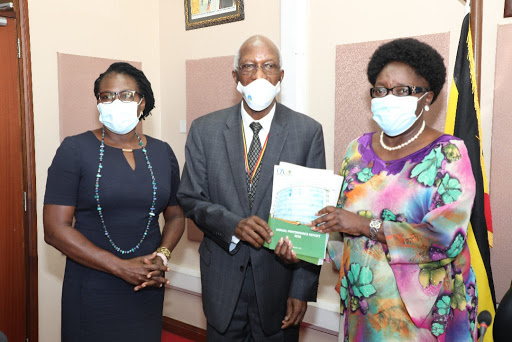Uganda’s debt is skyrocketing. Per the Ministry of Finance, Uganda’s public debt increased from $12.55b in June 2019, to $15.27b by June 2020, according to the Daily Monitor.
Auditor General Muwanga has raised concerns about this soaring debt from non-concessional loans.
Non-concessional loans, particularly those from China, expose national assets and interests to seizure in case of default.
The Ministry of Finance shows the World Bank provides 58 per cent of Uganda’s credit. 20 per cent comes from the African Development Bank (AfDB). Consequently, this leaves 22 per cent of Uganda’s loans coming from other sources, according to another Daily Monitor report.
Uganda has been borrowing from China and local banks more-and-more, said Mr. Muwanga. He added such loans threaten the country’s debt sustainability because of high-interest payments and short repayment periods.
Experts consider a country’s public debt sustainable if the government can meet its payment obligations without exceptional financial help or going into default.
Once a country’s debt to gross domestic product (GDP) ratio exceeds 50 percent, then it faces debt distress.
The International Monetary Fund (IMF) expects the ratio of Uganda’s debt to GDP ratio to grow from 41 per cent to 48.8 per cent by June 2021.
How did Uganda’s Debt Increase?
In its Medium Term Debt Management Strategy Report, the Ministry of Finance said the Covid-19 pandemic negatively affected economic activity in many sectors of the economy. In particular, it led to underperformance of domestic tax revenues. This underperformance widened the fiscal deficit, which increased borrowing requirements to meet budgetary expenditure needs for the FY 2020/21.
The pandemic continued to affect economic activity in the FY 2020/21. This will continue to increase borrowing requirements in the FY 2021/22 and the medium term.
Proposed interventions in the Medium Term Debt Management Strategy Report
In the report, the Ministry of Finance said in the coming financial year starting on July 1, the government will focus on the following debt management measures:
i) Scale up revenue generation through implementation of the Domestic Revenue Mobilisation Strategy (DRMS) prepared by Government of Uganda. DRMS is a five-year programme that ends in January 2025. DRMS is intended to strengthen Uganda’s capacity to generate sufficient revenues to finance its spending to mitigate the widening fiscal deficit. DRMS has three components:
- Strengthen Tax Policy: Conduct policy analysis, evaluate, and communicate the impact of tax and non-tax revenue reforms.
- Improve Tax and Non-Tax Revenue Administration and Compliance: Enhancing voluntary taxpayer compliance by strengthening taxpayer education, registration, data analysis and arrears management.
- Enhance Public-Private Dialogue: Ensure that public input informs decision-making on DRM-related reforms. In particular, advocacy for increased investment in service delivery and utilisation of government revenues in social expenditure.
ii) Realistic expenditure plans that are aligned with the projected revenues and the borrowing plan to have sustainable debt levels.
iii) Undertake limited borrowing both externally and domestically to reduce the costs of debt servicing and to ensure fiscal and debt sustainability; and
iv) Maintain external debt concessional borrowing, and avoid commercial/non-concessional borrowing of the contracted loans, and limit domestic debt within 1% of GDP.
Read More
How Uganda’s Spiraling Debt Burden Affects Budgetary and Taxation Policies
MX Player Ativador Windows 7 Ativador Windows 8, 8.1 ativador office 2019



